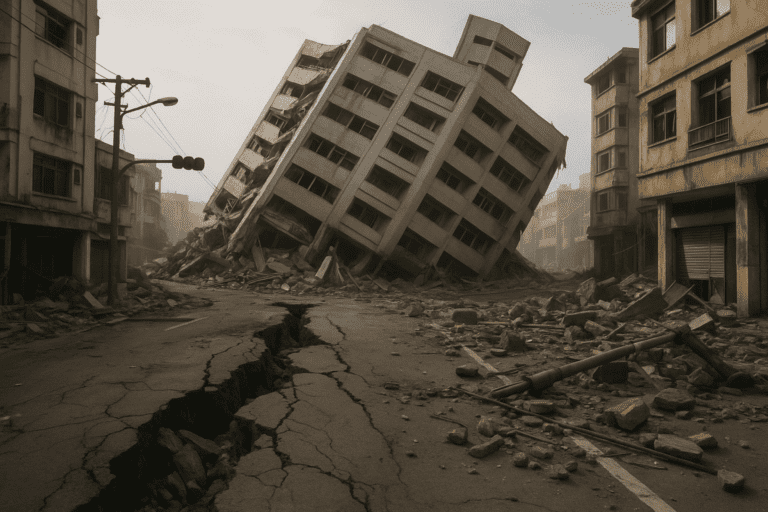On April 3, 2024, a powerful 7.4 magnitude earthquake struck off Taiwan’s eastern coast near Hualien, causing widespread destruction and loss. The tremor claimed at least 18 lives and injured over 1,000 people, shaking much of the island. The eastern regions bore the brunt of the disaster, with severe damage to buildings and infrastructure. Additionally, the earthquake triggered small tsunamis along the coast, adding to the challenges faced by affected communities.
Structural Damage and Rescue Operations
The earthquake caused significant structural failures, particularly in eastern cities where numerous buildings collapsed or were severely damaged, trapping survivors beneath the rubble. Emergency rescue teams were mobilized immediately, working tirelessly to locate and assist those affected. The ongoing aftershocks and difficult terrain in remote mountainous areas complicated these life-saving efforts.
Hospitals in the hardest-hit regions quickly became overwhelmed, prompting the establishment of temporary shelters to house displaced residents. Assistance poured in from neighboring regions and international partners, supplying medical aid, food, and other vital resources to support the recovery.
Tsunami Impact and Coastal Concerns
While the tsunamis triggered by the quake were smaller than initially feared, they still caused flooding and damage to coastal infrastructure such as docks and seaside properties. The government issued tsunami warnings along multiple coastal areas, taking precautionary measures to protect residents living near the shore.
Challenges in Disaster Preparedness and Infrastructure
Taiwan’s location along the Pacific Ring of Fire makes it especially vulnerable to earthquakes. Although the nation has advanced disaster preparedness systems, this earthquake exposed vulnerabilities—particularly in the eastern regions—where building standards and infrastructure resilience require strengthening. Calls for retrofitting older buildings, enforcing stricter construction codes, and enhancing early warning systems have intensified.
Ongoing Recovery and Future Resilience
The path to recovery will be long and challenging. Taiwan must focus on rebuilding damaged infrastructure, providing sustained support to displaced families, and ensuring access to essential services for all survivors. This disaster has reignited discussions on improving disaster risk management and boosting resilience in the face of inevitable future seismic events.
Despite the significant toll, Taiwan’s swift and coordinated emergency response, coupled with international aid, helped to mitigate the disaster’s worst effects. The earthquake serves as a stark reminder of nature’s unpredictability and the critical importance of robust preparedness and infrastructure investment to safeguard communities against future catastrophes.


